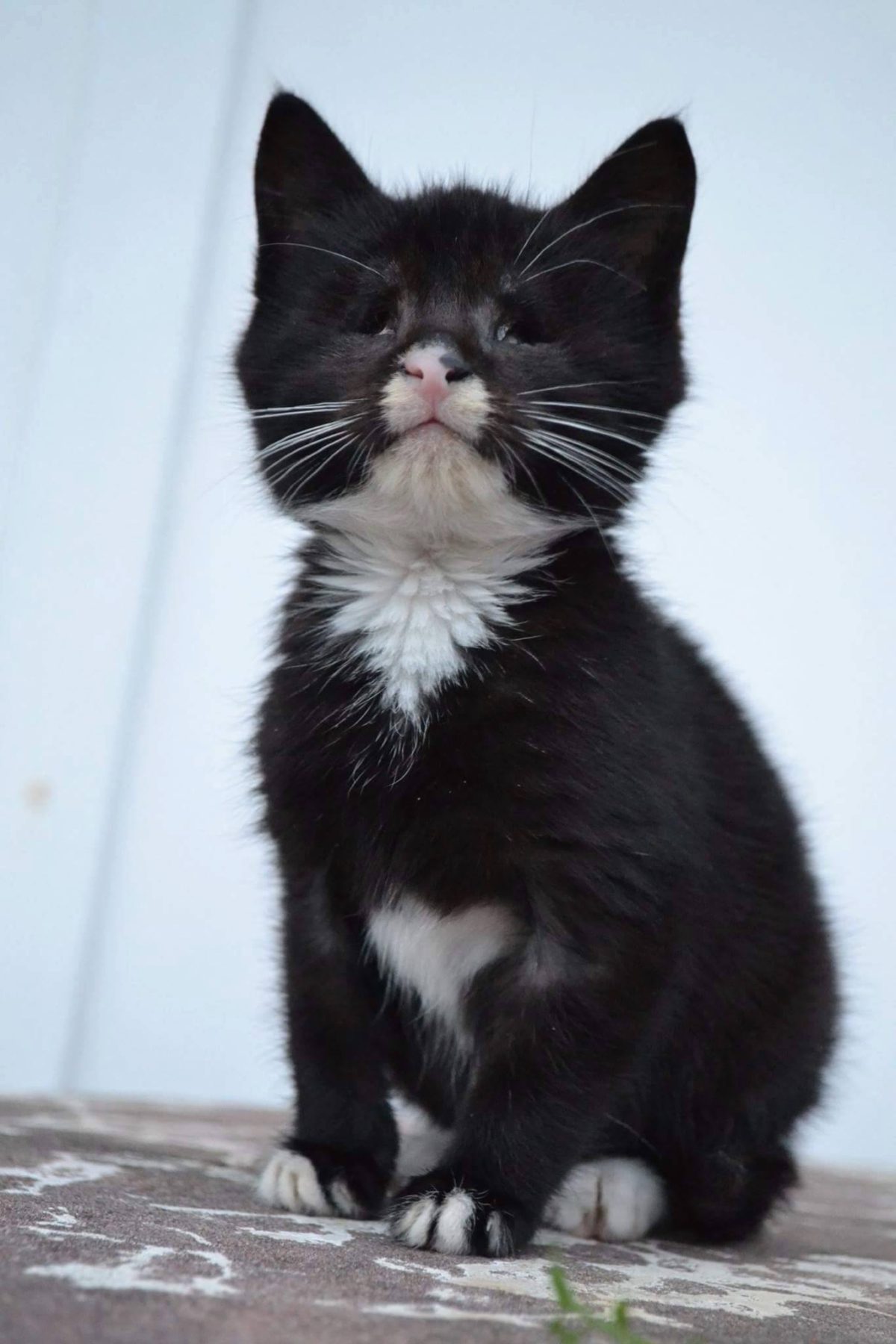CatRescue 901

Caring for Blind Cats
Blind cats are amazing. They live life very much like their seeing friends and have excellent quality of life. You’d almost never know they are blind.
Cats with limited or no sight can live full and vibrant lives. There are a few things to remember when you are looking at adopting a blind or one-eyed cat. Blind cats can adapt to their environment as they rely on their other senses to get around. Their whiskers help them judge distance, whilst their scent glands on their paws and cheeks help them get around by emitting pheromones to identify where they are and where they have been. A cats hearing is far more developed than ours and they can distinguish between different sound sources. They can also hear sounds at a distance, 4 to 5 times further away than humans.

How can you look after a blind cat
- Blind cats rely on their memory of their environment and they can mind-map their home. Consistency is the key for blind and seeing impaired cats. You will need to ensure your home is kept clear of things lying around. Don’t leave obstacles in unexpected places as they can bump into them.
- Furniture will need to be kept in the same location as they may easily bump into things and get disoriented or hurt.
- The cats food and water bowl will need to be in the same location, along with their bedding and litter box.
- Your blind cat must be kept indoors. They will be slower to react, so cannot get away from danger as quickly.
- Ensure you have enough toys for them in one area.
- Do not carry your cat from one room to the next. They need to walk around to gain their bearings and leave their scent around. If you lift them onto a couch or other raised surface, they may become disorientated and fall.
- If you have stairs, you may need to add a barrier to them until your cat is comfortable to climb them
- Spend time talking softly to your cat. They will need to be used to your commands and using their name . Make sure you talk quietly as you approach them so as to not startle them.
- Add a bell to the collar of other cats or animals in the home so they can hear where they are located.
- Designate areas of your home with rugs and other changes in texture on the floor
- It is important to start a blind cat off in a small safe environment. Perhaps one room that has new scratching posts and toys as well as her litter and food and water bowls. Make sure she is comfortable here first before venturing out further into the home.
Your blind cat may require a bit more patience from you, however if you are a dedicated cat parent you will have many happy years together.
Adopter Michael describes life with his blind cat, Amelia:
She has memory mapped the house and can get around really effectively, she uses her whiskers and her tail to feel what’s around her, and she very rarely ever bumps into anything. She is comfortable and confident once she knows where she is, and she gets around so well that you’d be forgiven for sometimes forgetting she is actually blind.
She loves to play. At first we tried to get her toys with bells or something that made noise, but after a while we noticed that wasn’t really important. What makes a good toy for Amelia is its texture and weight. She throws toys around and chases them, catches them, throws them again. Sometimes when you watch her you swear she must be able to see.
So I guess I’ve found that if Amelia is feels safe, is in familiar surrounds and trusts the people around her, then you can hardly even notice that she is blind.
Here are more stories from other blind cats we have adopted:

Elsa was probably about 4 weeks old when she was found, and she wasn’t just alone, she was also blind. In fact, she didn’t seem to have eyes at all, but tiny pink holes where her eyes should have been. She was in terrible shape – she had lice, fleas, intestinal worms and ringworm. She’d been born without fully formed eyes, and had a pronounced head wobble and difficulties walking, which a veterinary neurologist later diagnosed as cerebellar hypoplasia.
Despite all her issues, Elsa is incredibly affectionate and sweet, and she constantly purred for attention. After treatment, she now runs and plays like any other kitten her age. Elsa will live a full, happy life as an indoor only cat placed with a loving and understanding family.

They say that love is blind, but in this case it’s really true!
Back in 2011, our carer Jo rescued a greyhound who had spent 6 months in the Animal Welfare League shelter waiting for the right person to adopt him. After lots of love and patience Fastfeet rewarded Jo and her family with his beautiful caring personality. Then Jo began caring for sick little Indi who was recovering from surgery to remove both her eyes which had been damaged by severe cat flu, and it was a match made in heaven. The two animals formed an instant bond and spent all their time together with Fastfeet caring for Indi as she recovered.
When it came time for Indi to be adopted by a new family, Jo knew Fastfeet would miss her dearly. But Fastfeet’s love for cats didn’t stop at Indi — he’s formed a bond with every foster cat who comes into Jo’s house. “He just wants to be in the room with them,” Jo says. “He sits on his blanket and the cats crawl all over him. He even grooms them. I’m starting to think he believes he’s a cat.”
How can you help us help the cats?
Our Vets
CatRescue 901 would like to acknowledge our dedicated vets. We could not operate without these vets and their dedication to, and respect for, our rescued felines. Please support the vets who support rescue. See all vets click here.
Our Sponsors
CatRescue 901 would like the thank the generosity of our corporate sponsors for making our life saving work possible. We are indebted to them for their support. Please consider using their services. See all sponsors click here.
CatRescue 901 is a registered charity CFN 23215 with Tax Deductible Gift Recipient status.
ABN 47 167 228 980












